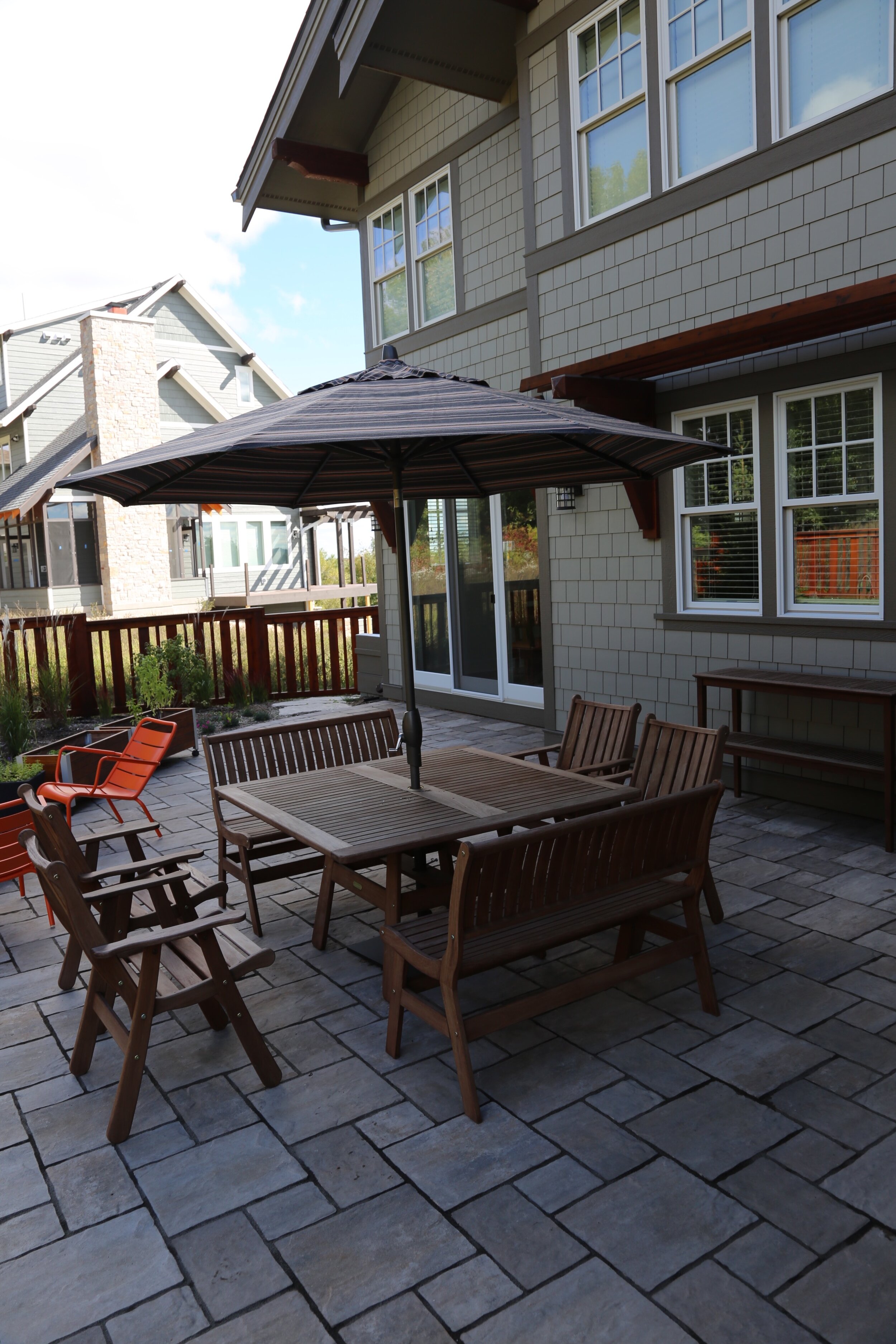I often get asked the question by customers "What is better, a deck or a patio?" The answer is not always simple. Sometimes architecture or terrain will dictate the choice. Sometimes it is simply personal preference. There are pros and cons of both patios and decks. What is better? Read below and hopefully the right choice for you will surface.
Generally decks will cost more than patios. The difference in cost will depend on slope and terrain and the materials chosen.
For decks, treated pine is the most affordable, composite materials are middle priced and exotic hardwoods such as Ipe will be the most expensive. A 10' x 20' deck will range in cost from $6,000 to $12,000 depending on the material. If railings are needed they can cost an additional $2,000 to $6,000.
Concrete patios will be the most affordable, brick pavers are middle cost and natural stone will be the most expensive. A 10' x 20' patio will range in cost from $1,500 to $12,000.
If your yard has steep hill, a deck will likely be less expensive. Patios are installed on the ground with a gravel base so a flatter space is required. A retaining wall may be needed to develop a flat enough space. A retaining wall/ patio combination can still be more affordable than a deck depending on the height of the wall.
Patios also tend to be less maintenance than decks. Again this depends on materials. Treated pine decks are more maintenance than composite decks. But composite decks can still mold and mildew so need regular cleaning. Concrete patios may be the least maintenance. Partly because somethings like cracked concrete are not repairable. Properly installed brick and stone patios require very little work.
Patios are easier to customize. You can be creative with both decks and patios using a variety of materials and creating colors or banding. There are more patio design options. Pavers are now available with different surfaces including aggregates of granite and quartz. It is very easy to install a curved patio. Decks tend to be rectangular since is difficult and costly to curve a them. Also, other elements such as pergolas, fire pits or outdoor kitchens are more easily integrated into a patio.
Decks also have more critters. Animals often live under decks. Screening or hardware cloth can be installed and buried under the deck to limit this. Patios, when installed correctly should have no problems with critters, ants or weeds. But, when a patio is installed improperly ants or weeds could be an issue.
In all municipalities I have worked in, decks require a permit. Patios generally do not require a permit, however check your municipality. Even if a permit is not required there may be zoning limitations. Decks will have set back requirements. Patios may have impermeable surface limitations, if so you may consider permeable patio.
The question of what is better, a deck or patio is not straight forward. I have found when answering the question most people will opt for a patio since they tend to be less expensive and less maintenance. Please feel free to contact me if you I can assist you with your project.









